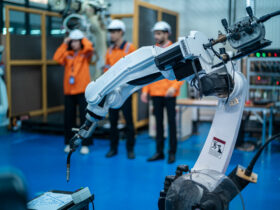Background screening has long been a critical process for businesses, organizations, and even individuals looking to verify credentials, criminal records, employment history, and financial backgrounds. Over time, the methods of conducting these screenings have evolved significantly.
What once relied on manual efforts and extensive paperwork has transformed into a high-tech, AI-driven process, making background screening faster, more accurate, and more efficient. This article delves into the history of background checks, the role of technology in revolutionizing the industry, and what the future holds for screening processes.
Traditional Methods of Background Screening
In the past, background screening was largely a manual endeavor. Organizations would require applicants to submit references, which hiring managers would personally contact.
Verifying employment history meant making phone calls to previous employers, while criminal background checks often required visits to courthouses to obtain official records. Credit checks, where applicable, involved contacting financial institutions and waiting for physical reports.
These methods, while effective in their time, had several limitations:
- Time-Consuming: The process could take weeks to complete, delaying hiring and other decision-making.
- Human Error: Manual data collection and entry increased the risk of errors and misinterpretation.
- Limited Scope: Many screenings were restricted to local jurisdictions, missing out on broader national or international data.
- Privacy and Compliance Issues: Inconsistent legal standards made it challenging to ensure full compliance with regulations across different regions.
Due diligence firms played a crucial role in helping businesses navigate these challenges by offering investigative services and ensuring thorough and legal background checks.
The Digital Transformation of Background Screening
The introduction of digital databases and the internet significantly changed how background screening was conducted. Public records began to be digitized, and employers could access online resources to verify an applicant’s history more efficiently.
However, it wasn’t until the advent of advanced technology—like artificial intelligence (AI), big data analytics, and blockchain—that background checks truly became streamlined and sophisticated.
Some of the key technological advancements include:
1. AI and Machine Learning in Screening
AI-driven algorithms now allow for real-time data analysis, making background screening not only faster but also more precise. AI can cross-reference data from multiple sources, flag inconsistencies, and identify potential red flags with greater accuracy. Machine learning models continuously improve screening processes by learning from past screenings and refining their criteria.
2. Automated Identity Verification
Biometric verification, such as facial recognition and fingerprint scanning, has become a major component of identity verification. These technologies help confirm a candidate’s identity quickly and prevent identity fraud. Automated identity verification is especially useful in remote hiring, where in-person document verification is not possible.
3. Blockchain for Data Security
Blockchain technology is emerging as a game-changer in background screening. It provides a tamper-proof ledger of information, ensuring that records cannot be altered or manipulated. This is particularly beneficial for education and employment verification, where fraudulent claims are common.
4. Global Databases and Cloud-Based Solutions
Cloud computing has enabled organizations to access global databases instantly. Employers can now check international criminal records, financial histories, and employment credentials without geographical limitations. Cloud-based platforms also facilitate seamless integration with HR software, improving workflow efficiency.
5. Compliance and Legal Enhancements
With stringent data protection laws such as the General Data Protection Regulation (GDPR) and the Fair Credit Reporting Act (FCRA), compliance has become a major focus. Modern background screening services are designed to ensure legal compliance by incorporating built-in regulatory checks, reducing the risk of non-compliance and potential lawsuits.
The Future of Background Screening
As technology continues to evolve, so will the methods of background screening. Some trends likely to shape the future of background checks include:
- AI-Driven Predictive Analytics: AI will not only verify past records but also predict potential risks based on behavioral data analysis.
- Decentralized Identity Management: Blockchain-based identity systems will give individuals control over their own data, allowing them to share verified credentials securely.
- Enhanced Social Media Screening: Employers may use AI to analyze social media behavior more comprehensively while ensuring compliance with privacy regulations.
- Real-Time Monitoring: Instead of one-time background checks, continuous monitoring of employees’ records and behaviors may become standard practice, ensuring ongoing compliance and risk mitigation.
Conclusion
The evolution of background screening from manual, labor-intensive processes to advanced, tech-driven solutions has transformed the way organizations verify information. The integration of AI, blockchain, and global databases has improved efficiency, accuracy, and security while ensuring compliance with legal standards.
As technology advances, background screening will continue to evolve, making it an even more indispensable tool for businesses, institutions, and individuals alike. Organizations that embrace these advancements will be better equipped to make informed decisions, mitigate risks, and ensure trust in their workforce and partnerships.













Leave a Reply